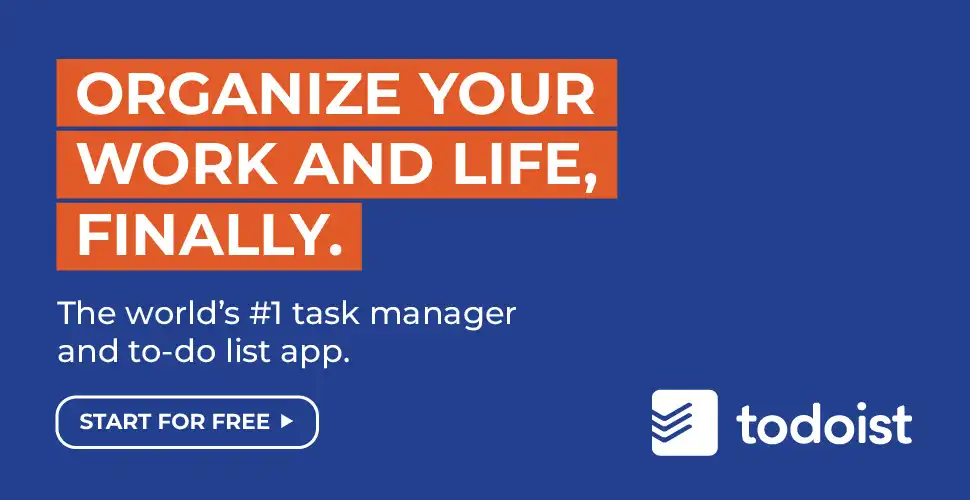
In the realm of learning business skills, there are instances where organizations make disorganized and impromptu decisions regarding employee performance. If your manager believes that your performance is hindered for a specific reason, they would engage with you in a manner akin to a good coach or leader.
It's essential to grasp that implementing a performance improvement plan isn't intended to dismiss an employee. Instead, it reflects a manager's empowerment and responsibility to guide struggling employees. The concept behind a Performance Improvement Plan doesn't convey a message of dominance, but rather one of leadership and assistance in addressing root causes and enhancing skills. In essence, this endeavor to assist and enhance employee capabilities is referred to as a "Performance Improvement Plan."
For greater impact, HR leaders should pinpoint and deliver the exact value that both employees and businesses require from performance management today. As Jeanine Prime, Vice President at Gartner, notes, "To achieve more impact, HR leaders must identify and deliver the precise value that both employees and their businesses need most from performance management today."
Now, let's delve even deeper to ascertain if there are any areas where we might be overlooking valuable opportunities.


What is a performance improvement plan?
A performance improvement plan is a formal document stating any repeated performance issues, as well as goals the employee must accomplish in order to return to good standing at the company (usually with a specified timeframe for the plans completion). A performance improvement plan (PIP) is a formal document detailing changes that an employee needs to make to maintain employment. Through the use of a performance improvement plan (PIP), organizations can find ways to provide positive reinforcement for struggling employees, as well as helping them to grow their expertise and skill set in ways that are consistent with their goals.
To define PIP, a performance improvement plan helps to foster productive conversations between the employee and his or her manager, setting up a structured approach that helps the employee improve his or her work results. If managers approach a PIP with an intent of listening to their managers employees perspectives, a performance improvement plan can be constructive.
Performance improvement plans can often open a path to a needed dialogue, in which employees are empowered to resolve challenging issues that may otherwise go unresolved because PIPs are typically seen as the precursor to firing, you (or your employees manager) need to clearly communicate that you view PIPs as a chance for improvement. PIPs can give employees ownership over improving their performance, and may actually result in them becoming stronger performers.
The process of identifying root causes for poor performance, outlining clear expectations for improvement, and giving employees the opportunity to correct deficiencies not only saves time and costs associated with laying off workers and rehiring them, but also builds a culture of accountability around productivity among employees and their managers. Whether an employee has never received adequate training, or has never developed skills required by an employee's role, a performance improvement plan will uncover skills gaps, determine what training is needed to close them, and help create an effective training program.
For example, the performance improvement plan can outline skills or training that an employee is lacking. Such a plan would provide an honest appraisal of the employees performance, giving them a sense of their gaps in productivity and areas in which they are falling short. An essential part of the alignment is to outline concrete steps, as well as measures for improvement, in cases when employees are not performing up to par.
Benefits of a performance improvement plan
1. Boosts motivation and improves mobility
Improvement plans can be used to improve employees mobility, by allowing them to transition to higher-level roles, or move laterally to roles that they believe they are best suited to. Employee improvement productivity plans can help to get employees on the right track, reducing the need for more severe interventions, and improve communication within teams.
A formal document that helps monitor and drive work effectiveness, PIPs highlight specific areas in which employees should be taking remedial actions. PIPs thoroughly describe each problem area or behavior causing problems, the corrective actions that will need to be taken to improve, and which meetings and resources will be made available for support.
2. Develops a positive reinforcement
A performance improvement plan can help employees who are being verbally abusive, disruptive, or who are not performing their job at a high level. Performance improvement plans can help to correct a low-performing or underperforming employee on the way to helping him become a flourishing member of the employer's team.
The criteria for the success of a performance improvement plan may vary, ranging from the completion of additional training to more frequent check-ins with the manager, depending on the company's circumstances and goals with the employee. Through a performance improvement plan (PIP), organizations can find ways to provide positive reinforcement for struggling employees, while helping them grow their expertise and skill set in ways that are consistent with their goals.
Read more: Tips for Seamless Team Collaboration
3. Saves time and money
Let’s admit honestly it is difficult to rehire an employee and go through a process of onboarding, training and alignment. The underperforming employees are generally put through a PIP process for 30-60-90 days to overcome the performance challenges an employee is facing. Save a lot of time, money and resources. A good leader would never demand repeating the recruitment process for him as he/she is not satisfied with the employee performance—instead would dig deeper to know the root cause and think about saving the cost and improving the employee turnover. Taking up the charge of the leadership qualities by the manager can make a lot of difference at the organization in order to acknowledge the poor performance.


How to create an effective performance improvement plan
Create the performance improvement plan mindfully, beforehand having an initial conversation with the employee. Keep a track of your tonality while sharing the plan, note that you’re talking to an underperforming employee not to a criminal.
Here’s how to create PIP plans:
1. Set clear benchmarks
You need not sound abrupt and baseless while declaring the employee to undergo a PIP plan to all three parties (Employee, Manager, HR) .
Set clear expectations with what you expect and where there is a gap that needs to be filled. With clear grounds, you’ll be able to highlight the points where the employee needs to work.
Also one tip: Don't be vague while describing the problems to the HR—give instances, behavior noticed, performance evidence in terms of deliverables, and at least considerable data to support your statement.
2. Set goals and objectives
Adopt SMART framework or OKR framework into the teams to build a motivating work environment and measure results.
Set objectives and help the employee to improve. With this, you’ll be able to analyze what you want and how the employee is delivering, be it quality, time bounded or intentions.
Tip: Don't set unrealistic goals for the employee, unless you really intend to fire the employee and PIP is just a medium.. Just kidding!
3. Provide required support
By the word strength, we mean define what support you’re going to provide to an employee while he/she will attain the PIP program and try to achieve the objective.
You ultimately want to help to improve the performance, so address the support like coaching, extended teams, mentoring or what courses you’ll be providing as a token to strengthen the performance of the employee.
4. Prepare a set of questionnaire
Keep no doubt and confusion, draft a set of questions that you need to ask employees to align with the improvement plan. An employee can create misassumptions, share the outline plan with the employee and let them know that you’re also open to answer any questions they have.
5. Perform check-ins
Keep a track of accountability and check-ins for regular improvements and simultaneously keep every concerned team member updated with the progress.
PIPs are useless if they aren't implemented and employees aren't motivated to follow them. Generally, the timeline that most organizations follow is between 30-60-90 days depending upon the role and dependency on the position.
6. Share the consequences at an early stage
With the PIP process going on, make a clear statement to the employee that “ what if it didn’t work out ?” Calculate your time and efforts synced with the performance of employees on PIP.
While in the hustle of consequences, focus on the improvement not on the punishment. Share advice and tips on how to pass the PIP- create a supportive environment. If the intention is right and motivating, the employee will feel confident and at the end it will be beneficial for both.
Takeaways
A Performance Improvement Plan is an important tool to transform a struggling employee into a valuable asset for the company. It is a process of patience, hard work and diligence. For employers, it serves to help to retain employees and save cost and time and for the employees it is understanding to learn in a cohesive environment and overcome the obstacles they might face in the shortcoming with the role.
Also keep a note, in some situations like the unwillingness to perform or wanting to get out of the job and find a new one. On that note employees try to scapegoat the work culture and benefits or throw other reasons as excuses to not perform. For these reasons the attempt towards PIP fails, no matter how hard you try to improve the performance.
Frequently asked questions (FAQs)
Q1. What are the performance improvement examples ?
Ans: If you want to create a performance improvement plan for an employee who the manager thinks lacks to meet the deadlines.
For example, here we’re talking about a software developer.
Then the objective and the goal can be:
Goal: To improve the quality of deliverables
Objective: Meet deadlines and work with discipline
Key Results:
- Create a daily timesheet of tasks and time invested.
- Out of 4, 3 deadlines have to be achieved with zero turnaround or errors.
- Practice typing speed with a target of 40 WPM
Metrics: Number of work delivered within the strict time frame and quality.
Q2. If my manager puts me through a Performance Improvement Plan, how should I react?
Ans: Whenever a performance improvement plan is presented to you as an employee, try to avoid getting defensive, panic or jumping to conclusions. Instead, speak honestly with your manager about why a performance improvement plan is needed and how you can achieve it. It is ultimately a sign that your employer values your work there.
Q3. Does the Performance Improvement Plan mean you are going to be fired sooner or later?
Ans: Definitely not, try to take a note out of it as a learning opportunity, accept your flaws and work on it. Taking feedback positively is a very important step in the process of PIP. If you are interested in staying at the company for much longer, take the PIP process as a challenge for yourself and get through this as smoothly as possible.
Q4. What is the estimated timeframe for a performance improvement plan?
Performance improvement plans typically lie between 30-60 or 90 days. Few roles only demand 30 days of PIP process while other roles can be extended to 120 days.


